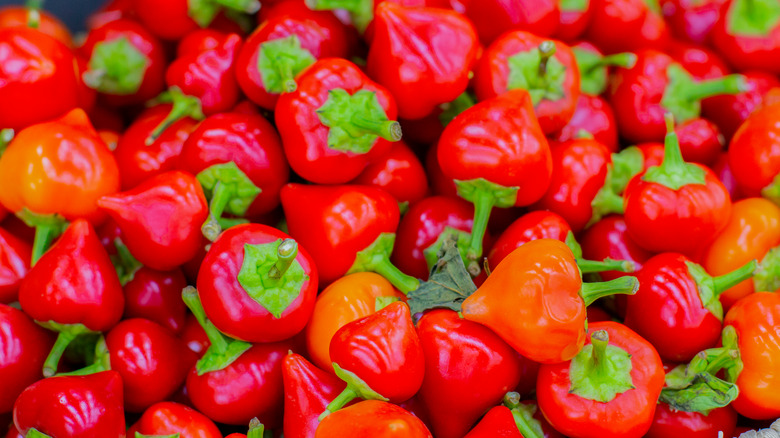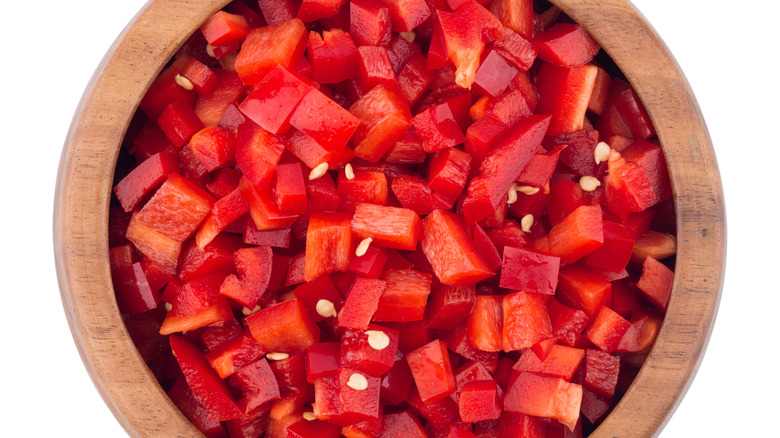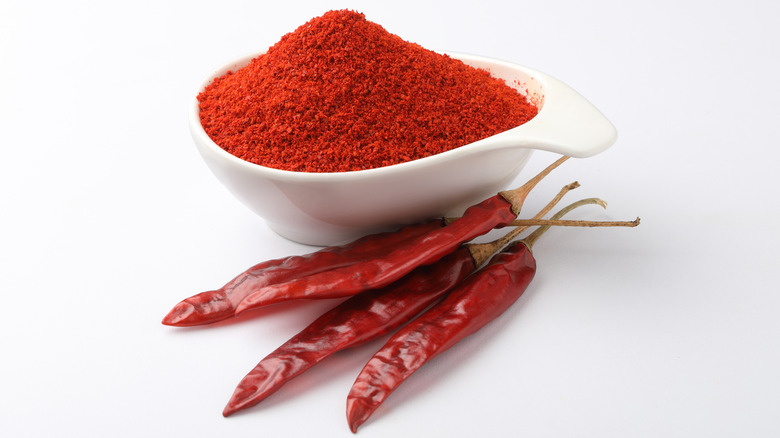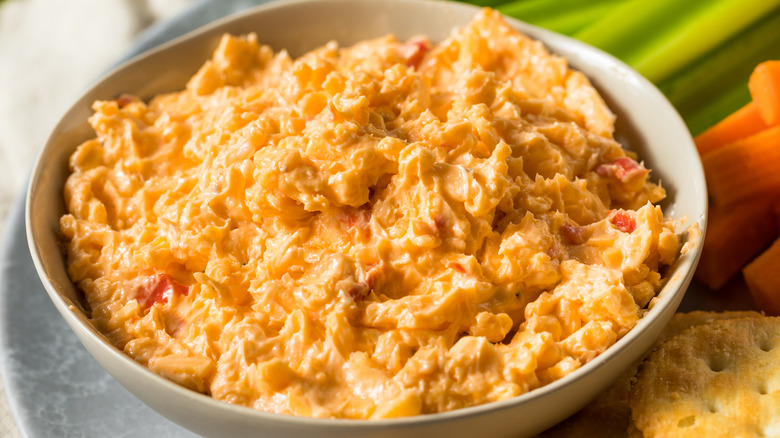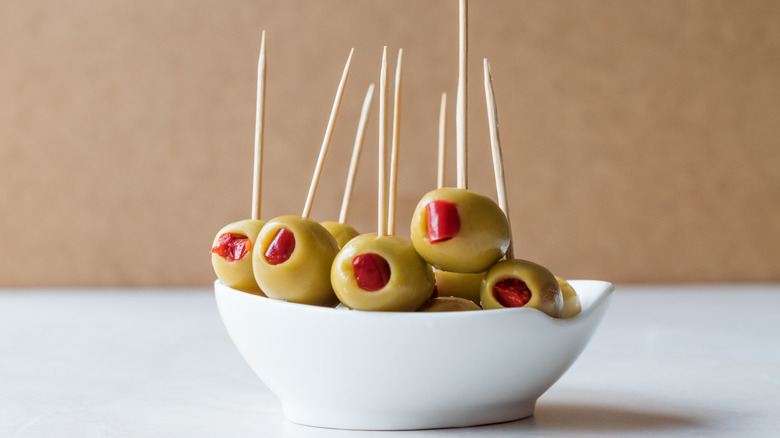What Are Pimentos And What Do They Taste Like?
Who loves martinis, the classy drink topped with an olive? Well, if you do, then you have had a pimento pepper without realizing it. Indeed, some olives are stuffed with a little bit of pimento, which is the small hint of red you see in the middle. The word "pimento" comes from the Latin "pigmentum," which means "pigment" in English and is the basis for both Spanish and Portuguese words, according to Chili Pepper Madness. And this versatile vegetable has become quite popular over the years.
Funnily enough, pimentos are believed to have first stuffed an olive back in France in the 1700s, according to Speciality Produce. However, they are more common in Spain, where they are used as a garnish, an ingredient, and a spice (via The Spruce Eats). These sweet peppers give a makeover of flavor to more than just a martini. Think of pimento cheese, for example — a cheesy, smooth topping for bread, crackers, or just about anything else you want to dip in it (per Once Upon a Chef). So, what exactly is this martini/cheese dip/garnish vegetable exactly?
What are pimentos?
Pimentos are a kind of pepper, but not all red peppers are pimentos. Technically, the veggie is a "large red, heart-shaped sweet pepper that measures 3-4 inches long and 2-3 inches wide," per AL.com. You may find some recipes that have pimento in the title but call for roasted red peppers instead, and this is where some get confused. You can easily substitute between the two because pimentos are classified as a sweet, red pepper. However, a big difference between them is that pimentos are a lot sweeter and more aromatic than just regular red bell peppers.
According to The Spruce Eats, pimentos come from the nightshade family and thrive in hot temperatures. In the United States, they are commonly grown in California, where there is a lot of heat and good soil, per SFGATE.
What do pimentos taste like?
Many peppers are known to be spicy, but you don't have to worry about that when it comes to little old pimento peppers. They have a more sweet and mild flavor compared to others, says The Spruce Eats. On the Scoville scale, they come in at only 100 to 500 units, meaning they are as mild as any pepper is gonna get. Fun fact: If you cook with paprika, you have more than likely tasted pimentos! While paprika is made with multiple peppers, dried pimento is often a key ingredient. According to Cooking Light, there are three different types of paprika: sweet (or regular), hot, and smoked. It's the regular/sweet variety that is made with mild peppers such as pimento.
Pimentos are found stuffed into olives a lot, so if you have had one of those, then you know what is giving you that sweet flavor. While these peppers are typically eaten in pickled form, they can be enjoyed fresh as well, per Chili Pepper Madness.
How to cook with pimentos
There are a ton of ways to enjoy pimento peppers since they can be stuffed, pickled, dried out, or tossed into things fresh. If you haven't had pimento cheese, let's start with that first. This dish is incredibly easy to make and always a crowd favorite. All you need is cheddar cheese, diced pimentos, mayonnaise, Worcestershire sauce, garlic, cayenne pepper, salt, pepper, and hot sauce for those who want a kick (via Chili Pepper Madness). You can either mix it all up by hand or throw it into a food processor, and it's ready to enjoy!
Pimentos also lend themselves well to savory dishes, such as chicken noodle casserole, per The Spruce Eats. Just toss them in with the broth, milk, and seasonings to further enrich the flavor of this baked classic. Once you top the dish with parmesan cheese, the final product is complete. Savory and sweet! You can also just slice fresh pimentos from the grocery store and toss them into a salad or put them on a burger or sandwich. The mild yet sweet flavor won't overpower any meal — it'll only add a hint of sweetness.
Are pimentos good for you?
The way you eat your pimentos will determine their health value. You can eat them in an olive, in a cheese or casserole dish, or by themselves. Obviously, some of these options are better than others. For example, eating them in olives isn't going to be nearly as good for you as eating them fresh. Olives with pimento in them can contain 41 calories per 1-ounce serving (about six olives), along with 4.3 grams of fat, 1.09 grams of carbohydrates, less than 1 gram of protein, and 441 milligrams of sodium, per Livestrong.
SFGATE claims that pimentos are high in vitamin C, vitamin A, and vitamin K. The publication notes that research supports the notion that diets high in these vitamins can bolster health and decrease the risk of medical conditions like cancer, vision issues, and osteoporosis. Of course, eating pimentos is no guarantee that you will be safe from such conditions.
